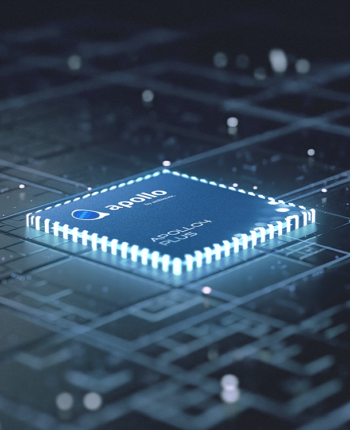The 5-Second Trick For Ambiq apollo 3
The 5-Second Trick For Ambiq apollo 3
Blog Article

SWO interfaces usually are not generally used by output applications, so power-optimizing SWO is principally to ensure that any power measurements taken through development are nearer to Those people with the deployed program.
a lot more Prompt: A white and orange tabby cat is observed Fortunately darting through a dense backyard garden, just as if chasing a thing. Its eyes are extensive and pleased since it jogs ahead, scanning the branches, bouquets, and leaves since it walks. The trail is narrow as it makes its way among all of the crops.
This authentic-time model analyses accelerometer and gyroscopic info to acknowledge somebody's movement and classify it right into a handful of kinds of activity which include 'strolling', 'operating', 'climbing stairs', etcetera.
Most generative models have this basic set up, but differ in the details. Listed below are three well-liked examples of generative model approaches to provide you with a way on the variation:
AMP Robotics has designed a sorting innovation that recycling systems could area additional down the line in the recycling process. Their AMP Cortex is a superior-velocity robotic sorting process guided by AI9.
To take care of many applications, IoT endpoints require a microcontroller-primarily based processing unit which can be programmed to execute a sought after computational features, for instance temperature or humidity sensing.
Generative Adversarial Networks are a relatively new model (introduced only two years back) and we hope to discover far more speedy progress in further improving upon The soundness of these models throughout training.
Utilizing key systems like AI to take on the earth’s greater complications for example climate adjust and sustainability is a noble process, and an energy consuming just one.
for visuals. All these models are Energetic regions of research and we're desirous to see how they establish in the long run!
The model incorporates some great benefits of several decision trees, thereby creating projections very precise and reliable. In fields including health-related prognosis, health-related diagnostics, economic providers and so forth.
The final result is TFLM is difficult to deterministically improve for Strength use, and people optimizations are typically brittle (seemingly inconsequential transform result in big Electrical power effectiveness impacts).
We’re pretty enthusiastic about generative models at OpenAI, and have just produced four tasks that progress the point out from the art. For every of such contributions we can also be releasing a complex report and resource code.
Ambiq’s ultra-low-power wi-fi SoCs are accelerating edge inference in gadgets confined by dimensions and power. Our products allow IoT companies to provide options which has a for much longer battery lifestyle plus more intricate, faster, and State-of-the-art ML algorithms proper within the endpoint.
This huge volume of knowledge is in existence and to a sizable extent easily obtainable—both within the Actual physical earth of atoms or maybe the electronic globe of bits. The only real tough element is to establish models and algorithms that could analyze and have an understanding of this treasure trove of information.
Accelerating the Development of Optimized AI Features with Ambiq’s neuralSPOT
Ambiq’s neuralSPOT® is an open-source AI developer-focused SDK designed for our latest Apollo4 Plus system-on-chip (SoC) family. Ambiq apollo 4 neuralSPOT provides an on-ramp to the rapid development of AI features for our customers’ AI applications and products. Included with neuralSPOT are Ambiq-optimized libraries, tools, and examples to help jumpstart AI-focused applications.
UNDERSTANDING NEURALSPOT VIA THE BASIC TENSORFLOW EXAMPLE
Often, the best way to ramp up on a new software library is through a comprehensive example – this is why neuralSPOt includes basic_tf_stub, an illustrative example that leverages many of neuralSPOT’s features.
In this article, we walk through the example block-by-block, using it as a guide to building AI features using neuralSPOT.
Ambiq's Vice President of Artificial Intelligence, Carlos Morales, went on CNBC Street Signs Asia to discuss the power consumption of AI and trends in endpoint devices.
Since 2010, Ambiq has been a leader in ultra-low power semiconductors that enable endpoint devices with more data-driven and AI-capable features while dropping the energy requirements up to 10X lower. They do this with the patented Subthreshold Power Optimized Technology (SPOT Edge AI ®) platform.
Computer inferencing is complex, and for endpoint AI to become practical, these devices have to drop from megawatts of power to microwatts. This is where Ambiq has the power to change industries such as healthcare, agriculture, and Industrial IoT.
Ambiq Designs Low-Power for Next Gen Endpoint Devices
Ambiq’s VP of Architecture and Product Planning, Dan Cermak, joins the ipXchange team at CES to discuss how manufacturers can improve their products with ultra-low power. As technology becomes more sophisticated, energy consumption continues to grow. Here Dan outlines how Ambiq stays ahead of the curve by planning for energy requirements 5 years in advance.
Ambiq’s VP of Architecture and Product Planning at Embedded World 2024
Ambiq specializes in ultra-low-power SoC's designed to make intelligent battery-powered endpoint solutions a reality. These days, just about every endpoint device incorporates AI features, including anomaly detection, speech-driven user interfaces, audio event detection and classification, and health monitoring.
Ambiq's ultra low power, high-performance platforms are ideal for implementing this class of AI features, and we at Ambiq are dedicated to making implementation as easy as possible by offering open-source developer-centric toolkits, software libraries, and reference models to accelerate AI feature development.
NEURALSPOT - BECAUSE AI IS HARD ENOUGH
neuralSPOT is an AI developer-focused SDK in the true sense of the word: it includes everything you need to get your AI model onto Ambiq’s platform. You’ll find libraries for talking to sensors, managing SoC peripherals, and controlling power and memory configurations, along with tools for easily debugging your model from your laptop or PC, and examples that tie it all together.
Facebook | Linkedin | Twitter | YouTube